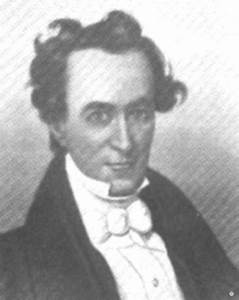This past week, Bobby and I took a day trip to Stephen F. Austin State Park. Oddly, neither of us had been there before even though it’s a short drive from Wharton, about 40 miles northeast. And, it’s a beautiful place. Very woodsy, very quiet. The drive there is also nice – back roads through cotton fields and pasture land.
Small history lesson
Stephen F. Austin, the "Father of Texas," brought the first 297 families to colonize Texas under a contract with the Mexican government. Austin chose the location for the colony with the help of Felipe Enrique Neri, Baron de Bastrop (and this guy is a whole other story) and founded the town of San Felipe de Austin in 1824. The town served as the capital of the first colony and (small piece of trivia here) was the founding site of the Texas Rangers. It remained the capital until 1836. Today San Felipe is a very small town with a population of 747. In 1940 the town donated 630 acres to the state for parkland.
The park itself offers all kind of options – tent camping
sites, RV sites, rustic cabins, biking trails, hiking trails, playgrounds. It is a state park with something for
everyone.
These are tiny cabins with the only amenity being a wood picnic table. I assume you would move the table outside and put down whatever bedding you need if sleeping in a tent does not appeal to you. Personally – I’d be happier in the tiny cabin. Tents collapse if a lion, tiger, or bear sits on one.
When I say it is heavily wooded, I did not exaggerate. However, the paths were clean of debris and walking was easy. There weren’t too many people there (middle of the week during school year) which was nice. And, I know you are wondering what all we saw, so - -
How cool is this! A small (4 or 5) herd of deer. They watched us walk by then went on about their business.
Osage Orange Tree – this is the fruit it makes – inedible to all.
The trees were named bois d'arc (or
"bow-wood"), by early French settlers who observed the wood being
used for war clubs and bow-making by the people of the Osage Nation. American settlers used the Osage orange as a
hedge to exclude free-range livestock from vegetable gardens and corn fields. Under severe pruning, the hedge apple sprouted
abundant adventitious shoots from its base; as these shoots grew, they became
interwoven and formed a dense, thorny barrier hedge. The thorny Osage orange
tree was widely naturalized throughout the United States until this usage was
superseded by the invention of barbed wire in 1874.
But, as far as I’ve read, it’s pretty much an invasive trash
tree.
Tingle Tongue Tree (I accused Bobby of making that up – but no ). An odd looking small tree, it is covered with cork-like warts, each tipped with a small thorn and has the ability to numb your mouth if you chew on a bit of the bark or leaves. In the lost past days, when one was experiencing pain in the mouth, they could chew on a part of the tree to numb it and take the pain away.
Paths were just a bit hilly (hey – I live in south Texas where the freeways have the tallest hills around!)
The Sycamore trees are starting to lose their bark as well as their leaves.
There was wild Turks Cap everywhere. It’s a TX native that attracts butterflies, bees, and hummingbirds. Plus, it will flower from late spring until first frost (and for us, that might be in January!). Oh – another thing – it’s an edible plant. Young leaves and flowers in salads or added to drinks.
My wild flower book calls these Meadow Asters. Very pretty.
It was a lovely day.
24 Oct 2021
ps: Did I mention - -
-
Halloween
is Coming!













That was a great travelogue. Thanks for the history, too.
ReplyDeleteThose asters are lovely, too.
ReplyDeleteOh what a lovely ramble! We had osage orange trees up in Ohio. Interesting that you have them down in Texas too, but I've never seen any near me in NC.
ReplyDeleteremember going there when I was a kid when we were stationed at Bergstrom AFB..my grandparents lived in Mesquite Texas and lived on Bois D'arc street. There were those trees all over and daddy said the green balls were called horse apples..
ReplyDeleteyes - also hedge apple, bodark, bodock, monkey ball, monkey brains, yellow-wood and mock orange - whew! lots of name choices!
DeleteFascinating info about the Osage Orange Tree and the Tingle Tongue Tree!
ReplyDeleteBeautiful blog
ReplyDeletePlease read my post
ReplyDelete